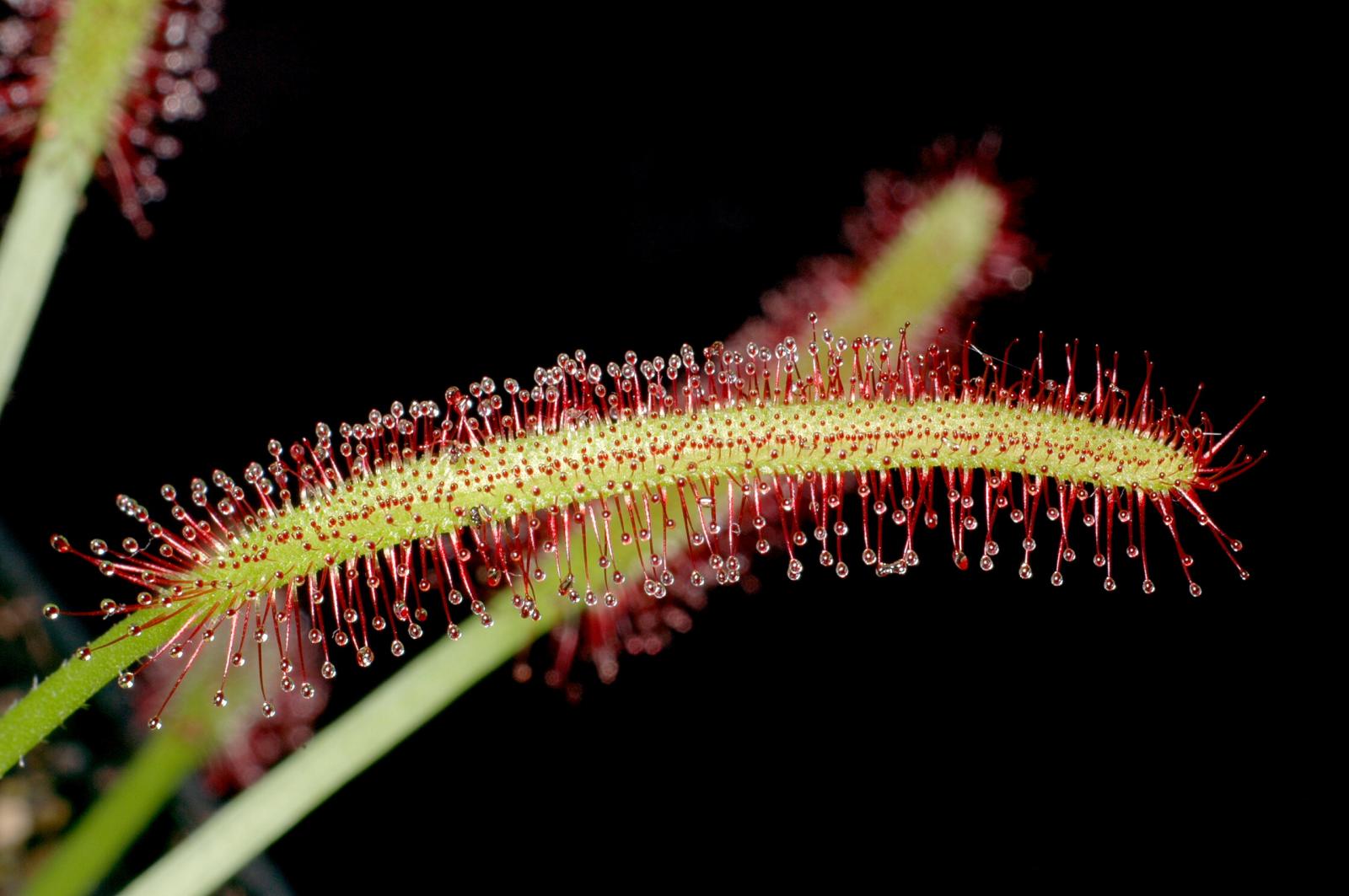
Drosera capensis. Wikimedia.
Carnivorous plants can be a source of inspiration for new materials with specific mechanical properties, according to researchers from the Centre for Complexity and Biosystems (CC&B) of the University of Milan. In a paper recently published on PNAS– and selected for the journal’s cover –they analysed the mechanics by which one of these plants, Drosera capensis, folds its leaves around insects trapped on their sticky surface in order to digest them.
Carnivorous plants have fascinated scientists – including Charles Darwin, who wrote a book on the subject – for a long time, but most of the research activity focused on the biochemistry behind their leaf’s movements. This allowed to identify a bunch of molecules, including plant growth hormones, that are triggered by the presence of a prey and, in turns, can induce leaf closure. However, how mechanical forces actually carry out such a process in Drosera capensisis still unknown. Other carnivorous plants actuate their capture mechanisms by storing elastic energy that is then released through an extremely rapid movement, but that is not the way D. capensisacts: its leaves close on much slower time scales (from twenty minutes to up to three hours), thus suggesting a different self-shaping mechanism.
Researchers from CC&B studied this mechanism by using milk drops of different volumes to simulate different preys landing on the plant surface, and then quantified the mechanical dynamics of the closure process by applying a counteracting force at the tip of a leaf until it is open. They combined these experiments with a detailed analysis of leaves’ geometric and elastic properties, in order to build a reliable model of their mechanical behaviour, and with an examination of their microstructural features and biochemical signals.
Their results showed that the bending of D. capensisleaves is encoded in their cellular architecture, which is able to convert specific biochemical signals into an asymmetric response, which in turns triggers the closure movement.
«I happened to read carefully what Darwin wrote on carnivorous plants and was fascinated by how nature could create such a sophisticated machinery» said Caterina La Porta, professor of General Pathology at the Department of Environmental Science and Policy and one of the two lead authors of the study. «As a general pathologist, I want to understand the roots of biological processes. Understanding carnivorous plants has been a tremendous challenge that helped me better clarify how different organisms combine mechanics and biochemistry to achieve their goals»
«The mechanism underlying the movements in carnivorous plants could provide inspiration in the design of bio-inspired materials with advanced functionalities», said Stefano Zapperi, professor of Theoretical Physics at the Department of Physics of the University of Milan, the second leading author of the paper. «In fact, in this study we managed to design a metamaterial structure that responds asymmetrically to a symmetric mechanical stimulus, following our experiments on Drosera capensis».
A similar strategy can be exploited to design other shapechanging metamaterials – i.e., artificial materials with electromagnetic properties usually not available in nature – that could find possible applications as components in soft robotics and provides examples of bio-inspired design.
Metamaterial architecture from a self-shaping carnivorous plant, PNAS,Caterina A. M. La Porta, Maria Chiara Lionetti, Silvia Bonfanti, Simone Milan, Cinzia Ferrario, Daniel Rayneau-Kirkhope, Mario Beretta, Maryam Hanifpour, Umberto Fascio, Miriam Ascagni, Larissa De Paola, Zoe Budrikis, Mario Schiavoni, Ermelinda Falletta, Alessandro Caselli, Oleksandr Chepizhko, Ausonio Tuissi, Alberto Vailati, and Stefano Zapperi, (2019), https://doi.org/10.1073/pnas.1904984116


